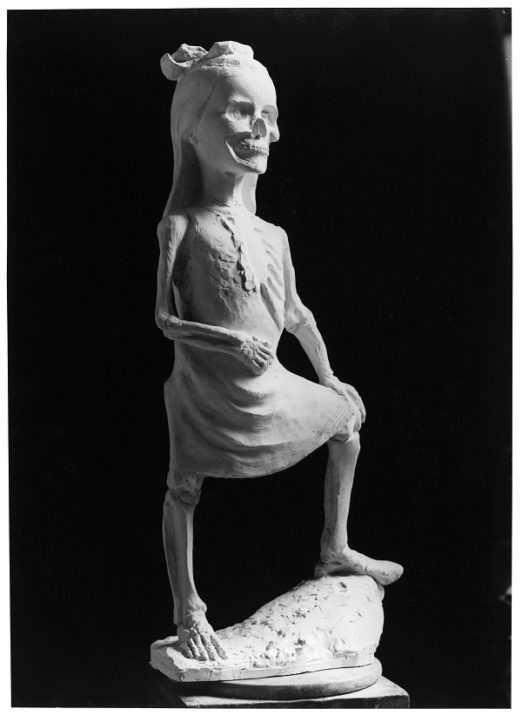Guernica: Immediate History
24 June – 3 September 2023
To coincide with the “René Iché” exhibition, the Roubaix museum has decided to highlight Guernica, a little-known work, which epitomises the artist’s political commitment, as well as being atypical in the immediacy of its production. It was an instant reaction to a very contemporary historic event and an apocalyptic vision of the future.
On 26 April 1937, planes sent from Nazi Germany and Fascist-controlled Italy bombed the Basque town of Guernica in support of nationalist rebels, led by General Franco, against Spain’s Second Republic government. Since the men were working in the fields, women and children were the main victims of what constituted aviation history’s first modern, military air-raid against a defenceless civilian population. Soon viewed as a terrorist act, this episode of the Spanish Civil War left a huge impression due to the scale and violence of reprisals against Franco’s opponents. Guernica, a monumental “chessboard of life and death” (to quote Michel Leiris), played a major role in Republican propaganda, before becoming a timeless and universal political symbol of war and violence against civilian populations. But Picasso was not the only artist who reacted to this disaster; its repercussions were significant in anti-fascist circles. This exhibition enables visitors to discover or rediscover various works, including the ambitious composition by painter Jean Amblard (1911-1989), held at the museum in Denain, an etching by Jean Deville (1901-1972) – which shows Death, revealing its true face before the ruins of Guernica, acquired by the French state in 1937 – and Paul Éluard’s famous poem entitled Victory of Guernica.
In a prominent position, the terrifying sculpture by René Iché is thought to have been sculpted on 27 April 1937, as soon as the artist heard news of the bombing on the radio. Interrupting the family meal, he asked his youngest daughter Hélène, aged 6 at the time, to pose for him and swiftly sculpted a skeletal, standing figure of a young girl. With a penetrating, pitiless stare and torn dress, she is shown in an arrogant posture, evoking the medieval Dance of Death as a backdrop to this contemporary nightmare.
The artist named the work Guernica or Giovinezza (after the ‘Youth’ song by Giuseppe Blanc, which became the official anthem of the fascist party from 1923). He exhibited the sculpture only once in his lifetime, in 1940.
Curators: Alice Massé and Bruno Gaudichon
The scenography was produced thanks to the generous support of “peintures Tollens“
Caption : René Iché, Guernica, 1937. Plâtre. Montpellier, Musée Fabre.
©Fonds Marc Vaux / Centre Pompidou, Paris, 2022 ©Succession René Iché, Adagp, Paris, 2022



